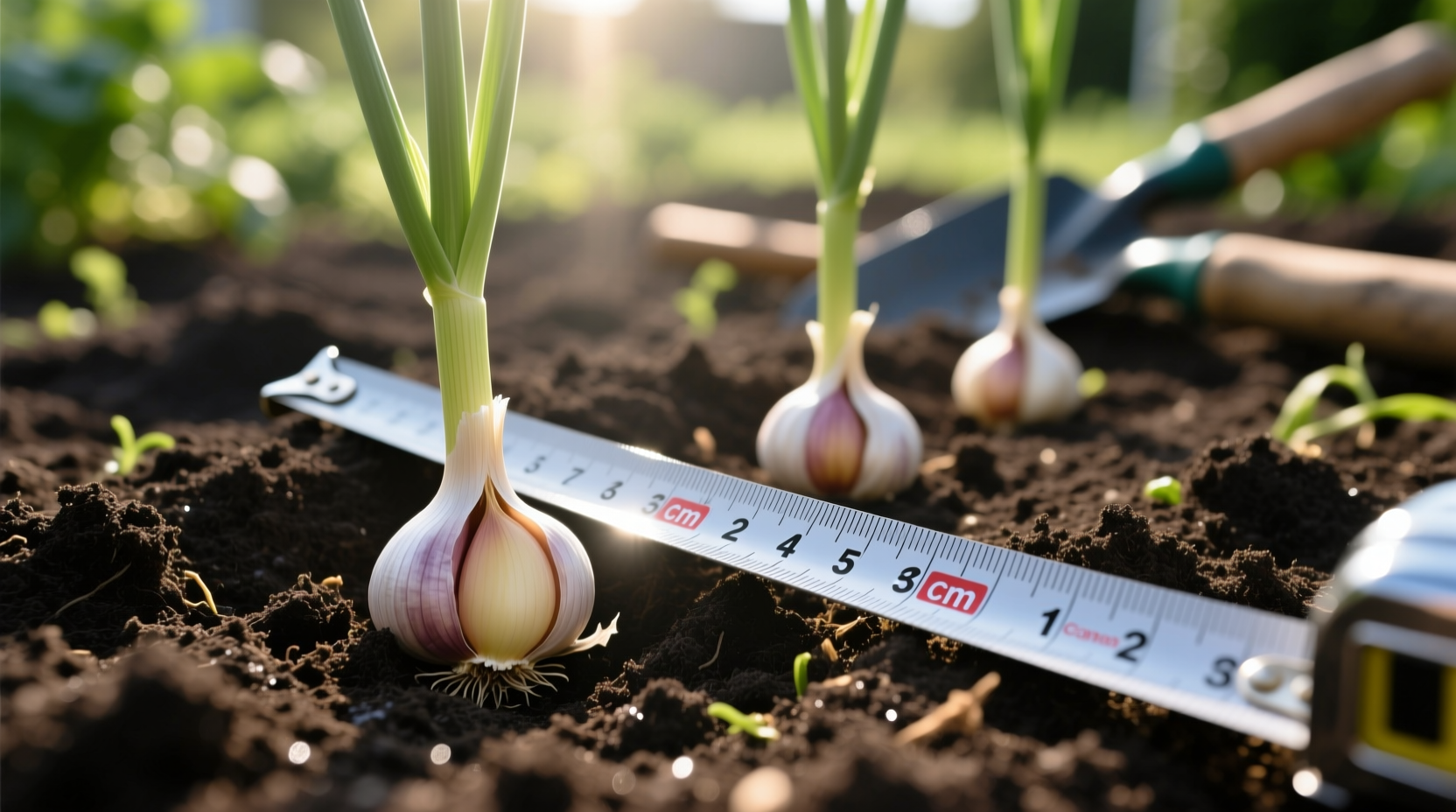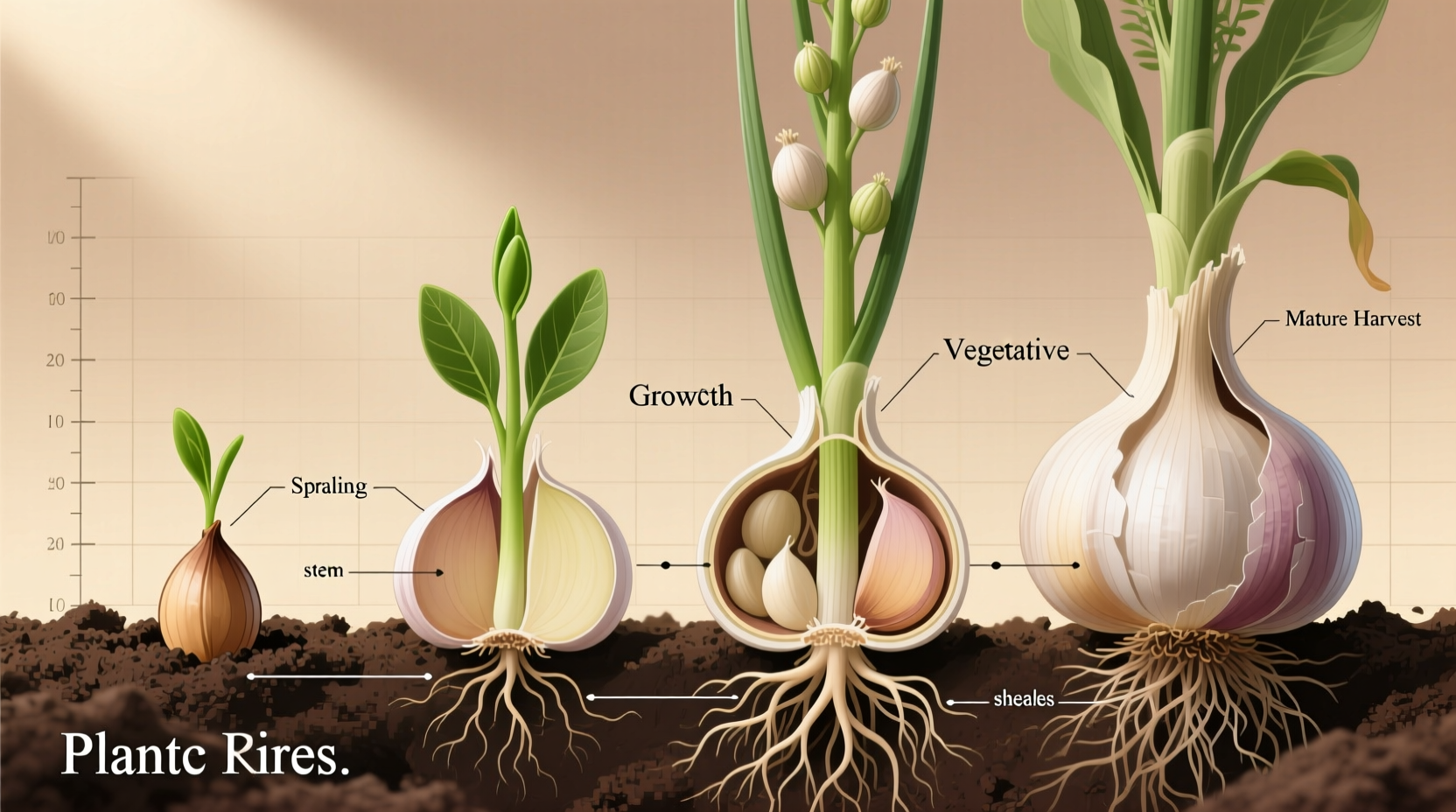Understanding garlic growing time is essential for gardeners seeking robust, flavorful bulbs. Whether you're a beginner or experienced grower, knowing the precise timeline prevents common mistakes that lead to small bulbs or premature bolting. This guide delivers science-backed timing strategies used by professional growers, helping you maximize your harvest regardless of climate zone.
Garlic Varieties and Their Growth Timelines
Not all garlic grows at the same pace. The two main categories—hardneck and softneck—have distinct growth patterns that affect harvest timing. Hardneck varieties develop a central flower stalk (scape) and generally mature faster, while softneck types store longer but require more time to reach full size.
| Variety Type | Days to Maturity | Planting Season | Harvest Time | Best Climate Zones |
|---|---|---|---|---|
| Hardneck (Rocambole, Purple Stripe) | 240-270 days | Fall (4-6 weeks before first frost) | Late spring to early summer | 3-7 (colder climates) |
| Softneck (Silverskin, Artichoke) | 270-300 days | Fall or early spring | Mid to late summer | 5-10 (warmer climates) |
| Elephant Garlic (actually a leek) | 180-210 days | Fall | Early summer | 3-9 |
According to the USDA gardening guidelines, hardneck varieties perform best in regions with cold winters, while softnecks thrive in milder climates. This distinction significantly impacts your planting schedule and expected harvest window.
The Complete Garlic Growth Timeline
Successful garlic cultivation follows a predictable seasonal pattern. Understanding each phase helps you anticipate needs and avoid timing errors that compromise your harvest.
Fall Planting (Critical Starting Point)
Plant cloves 4-6 weeks before your region's first hard frost—typically September to November in the Northern Hemisphere. This timing allows root development without significant top growth before winter dormancy. The University of Minnesota Extension confirms this window enables cloves to establish roots while avoiding premature sprouting.

Winter Dormancy (Essential Rest Period)
During winter months, garlic focuses on root development while top growth pauses. Mulching with straw (3-4 inches) protects cloves from temperature fluctuations. This cold period is crucial—garlic requires 4-8 weeks below 40°F (4°C) to initiate proper bulb formation.
Spring Growth Surge (Key Development Phase)
As temperatures rise above 40°F (4°C) in spring, garlic enters rapid growth. Monitor these critical milestones:
- March-April: First green shoots emerge
- April-May: Hardneck varieties produce scapes (remove these to direct energy to bulb growth)
- May-June: Bulb formation accelerates with increasing daylight
Harvest Timing (Precision Matters)
Harvest when 1/3 to 1/2 of leaves have turned brown—a visual indicator confirmed by the Oregon State University Extension. Waiting too long causes cloves to separate ("exploding bulbs"), while harvesting early yields undersized bulbs. Check a test bulb first to verify proper clove formation.
Factors That Impact Garlic Growing Time
Several variables influence your garlic's development speed. Understanding these helps adjust expectations based on your specific conditions.
Climate Zone Considerations
Gardeners in USDA zones 3-5 typically grow hardneck varieties with spring harvests (June-July), while zones 6-10 often cultivate softnecks ready in July-August. The National Gardening Association notes that in zones 8-10, garlic may require pre-chilling cloves in the refrigerator for 4-8 weeks before planting to simulate winter conditions.
Soil Conditions and Preparation
Well-draining soil with pH 6.0-7.0 promotes optimal growth. Heavy clay soils slow development, while sandy soils may require more frequent watering. Incorporate 3-4 inches of compost before planting to improve soil structure and nutrient availability—this can reduce growing time by 10-15 days according to Cornell University's horticultural studies.
Watering Practices
Consistent moisture is crucial during bulb formation (April-May). Reduce watering 2-3 weeks before harvest to prevent rot and improve storage quality. Irregular watering extends growing time and increases disease risk.
Common Timing Mistakes and Solutions
Avoid these frequent errors that compromise your garlic harvest:
Planting Too Late in Fall
Problem: Insufficient root development before winter. Solution: Plant cloves 4-6 weeks before first frost date. Use the USDA Plant Hardiness Zone Map to determine your local frost dates.
Harvesting Too Early
Problem: Small bulbs with underdeveloped cloves. Solution: Wait until at least 5 green leaves remain (indicating 1/3 browned foliage). Gently dig a test bulb to check clove development.
Leaving Scapes on Hardneck Varieties
Problem: Energy diverted to flower production reduces bulb size. Solution: Remove scapes when they complete their first coil (typically May). This simple step increases bulb size by 20-30%.
Troubleshooting Growth Timeline Issues
When your garlic isn't following the expected timeline, consider these adjustments:
- Slow spring growth: Apply balanced fertilizer (10-10-10) when shoots reach 4 inches tall
- Small bulbs: Check spacing—cloves need 6-8 inches between plants for optimal development
- Premature bolting: May indicate temperature fluctuations; mulch helps stabilize soil temperature
- Delayed maturity: In warm climates, try pre-chilling cloves in refrigerator for 4-8 weeks before planting
Remember that garlic growing time varies by variety and local conditions. Track your garden's specific timeline each year to refine your approach—most growers see improvement in bulb size and harvest timing with each successive season.
Frequently Asked Questions
Can I grow garlic in containers and how does it affect growing time?
Yes, garlic grows well in containers with proper drainage. Growing time remains similar to garden planting (8-9 months), but container-grown garlic may mature 1-2 weeks earlier due to warmer soil temperatures. Use pots at least 8 inches deep with quality potting mix, and monitor moisture closely as containers dry faster than garden beds.
How do I know exactly when my garlic is ready to harvest?
Check for visual indicators: when 1/3 to 1/2 of the leaves have turned brown while 5+ green leaves remain. Gently dig around a test bulb to verify cloves have filled out the skin but haven't started separating. For hardneck varieties, harvest scapes when they complete their first coil to redirect energy to bulb development.
What happens if I plant garlic in spring instead of fall?
Spring-planted garlic typically produces smaller bulbs as it misses the critical winter chilling period. While it will still grow, bulbs may only develop 1-3 large cloves instead of the typical 8-12. In warmer climates (zones 8+), spring planting can work with pre-chilled cloves, but expect a 20-30% reduction in bulb size compared to fall planting.
How long does garlic need to cure after harvest?
Garlic requires 2-4 weeks of curing in a warm, dry, well-ventilated space out of direct sunlight. Proper curing extends storage life significantly—hardneck varieties store 4-6 months while softnecks can last 8-12 months when cured correctly. Check bulbs periodically; they're ready for storage when necks are fully dry and papery.











 浙公网安备
33010002000092号
浙公网安备
33010002000092号 浙B2-20120091-4
浙B2-20120091-4